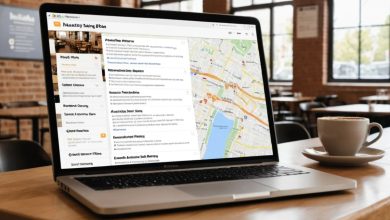Tech Networking Meetups to Expand Your Startup Circle
Walking into a room filled with tech enthusiasts, startup founders, and potential investors can feel electrifying—and a bit intimidating. Yet, these gatherings hold the key to forging critical connections, receiving early feedback, and discovering collaborators who can propel your venture forward. In this article, you will learn how to identify the most valuable tech networking meetups, prepare effectively, maximize each interaction, and follow up strategically to expand your startup circle with purpose.
Understanding the Value of Tech Networking Meetups
What Are Tech Networking Meetups? (Featured Snippet Optimization)
Tech networking meetups are informal gatherings of technology professionals, founders, and investors designed to foster connections, knowledge sharing, and collaboration. These events typically blend short talks or demos with open networking sessions, allowing attendees to exchange ideas, showcase products, and identify potential partners.
Why Startup Founders Need Tech Meetups
Attending tech meetups can be transformative for startup founders. Key benefits include:
-
Access to Co-Founders and Team Members: Meetup attendees often share complementary skills, making it easier to find co-founders or early employees with aligned expertise.
-
Real-Time Product Feedback: Demonstrating an MVP or prototype at a demo night yields immediate insights, helping refine features before broader launch.
-
Investor Connections: Many meetups attract angel investors and VCs looking for promising early-stage startups, enabling founders to pitch in an informal setting.
-
Exposure to Emerging Trends: Hearing experts discuss topics like AI, blockchain, or DevOps ensures you stay ahead of industry shifts and can adapt your startup accordingly.
Identifying Your Networking Goals
Clear objectives guide your meetup strategy. Use the SMART framework:
-
Specific: “Find two potential co-founders skilled in backend development.”
-
Measurable: “Collect at least five new contacts per event.”
-
Achievable: “Attend meetups in my city twice a month.”
-
Relevant: “Focus on groups related to SaaS and cloud infrastructure.”
-
Time-Bound: “Secure a technical co-founder within three months.”
By defining these goals, you can choose events that align with your priorities and measure your progress effectively.
Types of Tech Networking Meetups for Startups
Local In-Person Meetups
In-person gatherings build rapport quickly and foster deeper connections:
-
Tech Happy Hours: Casual after-work events where small groups discuss projects over drinks.
-
Startup Demo Nights: Founders pitch their ideas on stage and gather feedback from peers and mentors.
-
Hackathons and Code Sprints: Collaborative coding sessions where participants solve real-world problems and showcase skills.
-
Industry Roundtables: Focused discussions on topics like artificial intelligence, blockchain, or IoT, often led by subject-matter experts.
Virtual Tech Networking Events
Virtual meetups provide broader reach and flexibility:
-
Webinar-Based Networking: Hosted on platforms like Zoom, these events include breakout rooms for small-group interactions.
-
Discord/Slack Channel Meetups: Topic-specific channels where members discuss challenges and share resources in real time.
-
Virtual Demo Days: Remote pitches followed by live chat Q&A, allowing global audiences to engage.
-
Online Office Hours: Hour-long sessions led by accelerators or incubators, offering one-on-one mentorship slots via video calls.
Hybrid and Specialty Meetups
Hybrid models blend in-person and virtual elements to maximize accessibility:
| Meetup Type | Pros | Cons | Ideal For |
|---|---|---|---|
| In-Person Meetups | Deeper personal rapport, spontaneous intros | Geographic limitations, higher time commitment | Local founders seeking co-founders |
| Virtual Meetups | Broad geographic reach, flexible scheduling | Potential for lower engagement, time-zone issues | Remote-first startups |
| Hybrid Events | Mix of both benefits, varied attendance | Requires seamless tech setup and moderation | Founders wanting both local and global reach |
| Specialty Workshops | Targeted skill-building, hands-on learning | Often small audience, niche focus | Teams needing deep expertise on specific tech |
Choosing the right format depends on your startup’s stage, resource constraints, and geographic spread.
Finding the Right Tech Networking Meetups
Researching Meetup Platforms and Event Calendars
Identifying suitable events starts with effective research:
-
Location Filters: Use city-based or metro-region searches to find nearby gatherings.
-
Industry Tags: Look for keywords like “startup,” “entrepreneurship,” “AI,” or “DevOps” to filter relevant meetups.
-
Frequency & Size: Decide whether you prefer weekly coding groups with a small number of attendees or quarterly demo nights drawing larger crowds.
-
Organizing Bodies: Focus on events hosted by incubators, accelerators, local co-working spaces, or university entrepreneurship centers.
Tutorial:
-
Subscribe on Meetup.com or Eventbrite with custom filters (e.g., “tech startup meetup – San Francisco”).
-
Enable Email Alerts for triggers such as “startup demo night” or “founders happy hour” to stay informed.
-
Join Social Media Groups like LinkedIn communities dedicated to your region’s tech scene to receive word-of-mouth recommendations.
Leveraging Local Startup Hubs and Co-Working Spaces
Physical hubs often double as networking epicenters:
-
Community Boards: Check bulletin boards in co-working lounges for flyers advertising upcoming events.
-
Accelerator and Incubator Newsletters: These organizations frequently host mixers and pitch days; subscribing keeps you in the loop.
-
University Entrepreneurship Centers: Many universities open their pitch nights and panels to local founders.
-
Tech Councils and Chambers of Commerce: Monthly forums or breakfast meetups can introduce you to seasoned entrepreneurs and local investors.
Tutorial:
-
Visit Co-Working Spaces and ask community managers about hidden or invite-only meetups.
-
Subscribe to Local Newsletters from hubs like “City Startup Weekly” or “Tech Hub Digest.”
-
Attend Open Office Hours at incubators such as Y Combinator or 500 Startups to uncover insider tips on niche meetups.
Community Referrals and Word-of-Mouth
Personal recommendations often lead to the highest-quality connections:
-
Ask Fellow Founders: “Which meetup helped you find your first investor?”
-
Engage Mentors and Advisors: Seek introductions to niche event organizers or private mastermind groups.
-
Leverage Alumni Networks: University entrepreneurship clubs and alumni associations frequently host exclusive gatherings.
-
Participate in Online Forums: Platforms like Reddit’s r/startups or Hacker News showcase meetup announcements; joining conversations can yield invites to private events.
Preparing to Attend a Tech Networking Meetup
Crafting a Focused Elevator Pitch for Startup Founders
A compelling pitch ensures you make an immediate impression:
-
Who You Are: Introduce yourself and your startup succinctly, e.g., “I’m Alex Chang, founder of DataPulse Analytics.”
-
What You Do: Describe your product or service in one sentence: “We offer real-time IoT analytics for manufacturing plants.”
-
Traction or Milestone: Highlight a recent achievement such as “We’ve onboarded ten pilot customers and reduced downtime by 20%.”
-
What You Seek: Clearly state your objective: “I’m looking for a data engineer to join our team or an advisor in the supply chain space.”
Tutorial:
-
Draft a 30-Second Script incorporating these four elements.
-
Practice in Front of a Mirror or record yourself to refine your body language and tone.
-
Gather Feedback from Peers to ensure clarity and confidence before the meetup.
Researching Attendees and Speakers in Advance
Arriving well-informed can set you apart:
-
Review the Attendee List (if provided) for roles—such as UX designers or potential investors—that match your needs.
-
Identify Key Speakers or Panelists and prepare one thoughtful question for each, like “What tools do you recommend for scaling cloud infrastructure cost-effectively?”
-
Map Out Priority Connections: Highlight three individuals you must meet and note a mutual interest or shared connection.
Tutorial:
-
Create a Simple Spreadsheet with columns for Name, Role, Company, Talking Point, and Next Step.
-
Use LinkedIn to research backgrounds and note commonalities—such as alma mater or past projects—for more authentic conversations.
-
Develop Custom Conversation Starters: “I saw your recent blog on serverless architectures—how do you handle multi-region deployments?”
Setting Measurable Networking Goals for the Event
Clarity on desired outcomes drives intentional engagement:
-
Specific: “Connect with two potential UI/UX collaborators for our mobile app.”
-
Measurable: “Collect five business cards or LinkedIn contacts.”
-
Achievable: “Attend a 90-minute meetup after work.”
-
Relevant: “Prioritize events focused on SaaS startups.”
-
Time-Bound: “Schedule follow-up coffee chats within three days.”
Example Goal Worksheet:
| Goal | Metric | Deadline | Success Criteria |
|---|---|---|---|
| Find a technical co-founder | Secure two promising leads | Within 60 days | Two follow-up meetings scheduled |
| Get first 10 beta testers | Collect 10 emails | End of next month | 10 sign-ups from meetup contacts |
Documenting goals ensures each conversation moves you closer to a tangible result rather than aimless networking.
Maximizing Your Meetup Experience
Effective Nonverbal Communication and Presence
Your posture, eye contact, and expressions reinforce credibility:
-
Eye Contact: Maintain steady attention—on virtual platforms, look at the camera rather than your screen.
-
Open Posture: Avoid crossed arms; stand or sit tall with shoulders back and a slight forward lean to show engagement.
-
Facial Expressions: Smile genuinely and nod to signal common understanding.
Tutorial:
-
Warm-Up Before the Event: Spend ten minutes practicing posture exercises—stand against a wall to align your spine and roll shoulders back.
-
Camera Positioning (Virtual): Ensure the camera is at eye level, with soft lighting illuminating your face evenly.
-
Active Listening Cues: Subtly mirror the speaker’s expressions and offer verbal affirmations like “That’s insightful” to convey engagement.
Engaging in Small Talk and High-Impact Conversations
Move swiftly from pleasantries to meaningful dialogue:
-
Use Icebreakers: “What brought you to this meetup? Are you exploring new partnerships or investors?”
-
Ask Open-Ended Questions: “Which challenge in scaling your startup keeps you up at night?”
-
Offer Immediate Value: “I know a UX designer looking for a mobile app project—can I introduce you?”
-
Transition Smoothly to Next Steps: “I’d love to continue this conversation—can I share my LinkedIn profile or schedule a brief chat?”
Tutorial:
-
Prepare Three Icebreaker Questions tailored to the meetup theme, such as “How are you leveraging AI in your product roadmap?”
-
Practice Pivoting: Role-play shifting from small talk to a direct question within 15 seconds, ensuring conversations remain concise.
-
Close Each Interaction with a clear action: swapping digital business cards or setting a follow-up call.
Collecting Contact Information and Taking Notes
Efficient data capture prevents you from forgetting vital details:
-
Use Digital Tools: Scan business cards using a smartphone app like CamScanner or populate a note-taking template on your phone immediately.
-
Quick Jot-Downs: After each conversation, record one key takeaway—such as their interest in your MVP or a shared potential collaborator—before moving on.
-
Organize Information: Assign tags or labels in your note app or spreadsheet, like “Potential co-founder,” “Investor lead,” or “Beta user prospect.”
Example Note Template:
| Name | Role/Company | Key Insight | Next Step | Contact Method |
|---|---|---|---|---|
| Jane Doe | UX Lead, Acme Tech | Interested in joint beta | Email prototype by Friday | LinkedIn DM |
| Bob Kim | Angel Investor | Focused on seed-stage SaaS | Send pitch deck next week |
Recording these details in real time ensures your follow-up is personalized and relevant.
Post-Meetup Follow-Up Strategies
Crafting Personalized Follow-Up Messages
A thoughtful follow-up message turns a brief introduction into a lasting connection:
-
Personalized Greeting: Use their name and reference a specific discussion: “Hi Jane—enjoyed learning about your UX insights at last night’s meetup.”
-
Context Reminder: “It was great discussing AI analytics and how it applies to manufacturing.”
-
Value Offer: “As promised, here’s the whitepaper on edge computing that might help your scalability plans.”
-
Clear Call to Action: “Would you be open to a 15-minute call next week to explore collaboration?”
Tutorial:
-
Draft a Template with placeholders for Name, Event, Key Insight, and Resource Link.
-
Allocate Time Within 24–48 Hours: Block 30 minutes after each event for follow-up messages.
-
Track Responses: Use a spreadsheet with columns—Name, Date Sent, Response Received, Next Action—to monitor progress.
Organizing Contacts and Tracking Outcomes
A systematic approach to contact management amplifies your networking ROI:
-
Create a Centralized Spreadsheet: Columns for Name, Role, Company, Date Met, Key Discussion Point, Follow-Up Date, Next Step, and Outcome.
-
Assign Follow-Up Tasks Immediately: Tag each contact as “Email,” “LinkedIn Invite,” or “Schedule Call.”
-
Review Weekly: Update statuses—“Replied,” “Meeting Scheduled,” “No Response”—and refine outreach strategies accordingly.
Example Tracking Snapshot:
| Name | Company | Date Met | Follow-Up Date | Status | Next Step |
|---|---|---|---|---|---|
| Alice Li | DataForge | 2025-06-10 | 2025-06-11 | Replied | Schedule call (06/15) |
| Bob Kim | CloudWave | 2025-06-10 | 2025-06-11 | No Response | Send second email |
Maintaining this tracker ensures no valuable lead falls through the cracks.
Measuring Networking Success
Quantify the impact of your meetup efforts with key performance indicators (KPIs):
-
Number of New Contacts: Count how many connections you gain per meetup.
-
Follow-Up Response Rate: Calculate the percentage of responses received within one week.
-
Meetings Scheduled: Track calls or in-person meetings set up following each event.
-
Opportunities Generated: Record the number of viable leads—potential co-founders, clients, or investors.
-
Conversion Rate: (Opportunities ÷ Total Contacts) × 100, revealing which event types yield the highest returns.
Tutorial:
-
Set Quarterly Networking Goals: For example, “Convert 15% of meetup contacts into actionable leads.”
-
Use a Dashboard (spreadsheet or BI tool) to visualize trends over time.
-
Iterate Your Strategy: Identify high-ROI events and successful conversation tactics, and allocate more time to those opportunities.
Featured Snippet: Quick Steps to Find and Leverage Tech Networking Meetups
-
Define Your Objectives: Pinpoint what you need (co-founders, mentors, or investors).
-
Research Platforms: Subscribe to Meetup.com or Eventbrite with filters like “tech startup meetup.”
-
Vet Events by Relevance: Prioritize groups focused on your industry niche and startup stage.
-
Craft a Targeted Elevator Pitch: Introduce your startup in 30 seconds, emphasizing traction and needs.
-
Prepare Conversation Starters: Develop open-ended questions about attendees’ projects or challenges.
-
Collect and Organize Contacts: Use a digital note template in Google Sheets or a CRM to capture names, roles, and next steps.
-
Send Personalized Follow-Ups: Within 24–48 hours, reference specific discussion points, share resources, and propose action items.
-
Measure Your Success: Track new leads, meetings scheduled, and collaborations formed to refine your strategy for future meetups.
Frequently Asked Questions (FAQs)
How Can I Find Relevant Tech Networking Meetups in My City?
Search platforms like Meetup.com or Eventbrite using location-based filters and keywords such as “tech startup meetup” or “founder happy hour.” Subscribe to local incubator and co-working space newsletters, and join LinkedIn or Slack communities focused on your regional tech scene for word-of-mouth recommendations.
What Should I Wear to a Tech Networking Meetup?
Opt for business-casual attire that blends professionalism with approachability. For in-person events, a blazer with jeans or a smart collared shirt with chinos works well. For virtual meetups, choose solid colors and ensure your background is tidy and well-lit to convey credibility on camera.
How Many Meetups Should a Startup Founder Attend Monthly?
Aim for two to three quality meetups per month—ideally one in-person and one virtual—to balance time and energy. Focus on events most aligned with your goals, such as finding a co-founder or securing early adopters, while avoiding overcommitment that can lead to burnout.
Can Introverted Founders Succeed at Tech Meetups?
Yes. Preparation is key: refine your elevator pitch and practice conversation starters. Arrive early to engage in smaller, less crowded discussions, set realistic goals like “speak to two people,” and leverage follow-up messages to nurture relationships when in-person interaction feels draining.
Conclusion
Tech networking meetups offer startup founders a dynamic platform to connect with co-founders, mentors, investors, and collaborators. By understanding the meetup landscape, identifying events that align with your goals, preparing a targeted strategy, and following up diligently, you transform brief encounters into lasting partnerships. Track your progress through key metrics like contact acquisition, follow-up response rates, and opportunities generated to refine your approach over time. Whether you’re seeking a technical co-founder, early customers, or advisory support, these insights will help you leverage tech networking meetups to expand your startup circle and accelerate your venture’s success.
Published on: 4 de June de 2025








